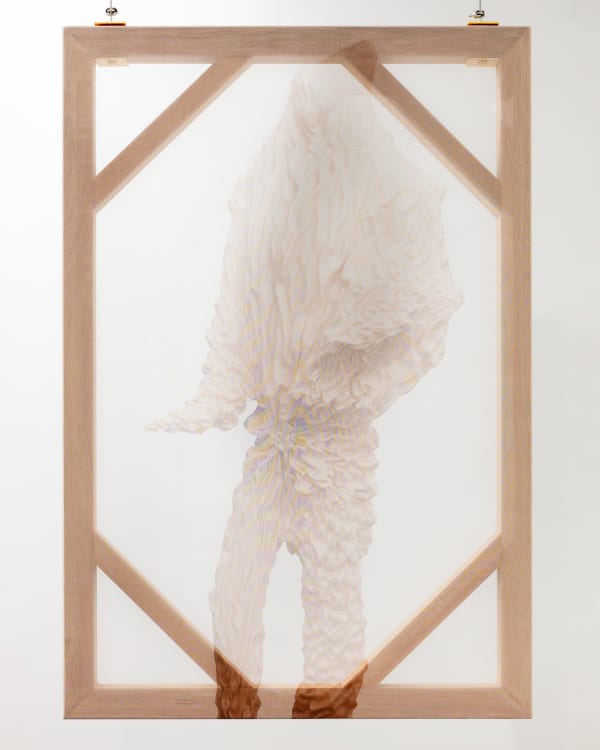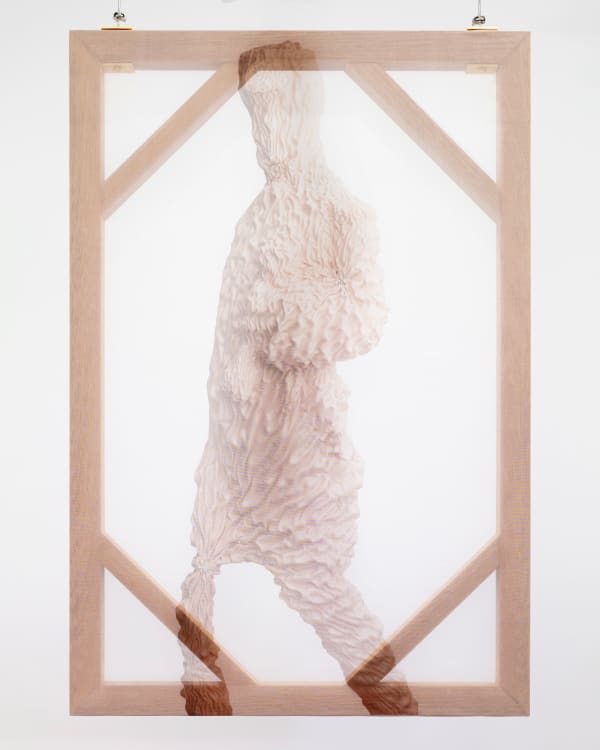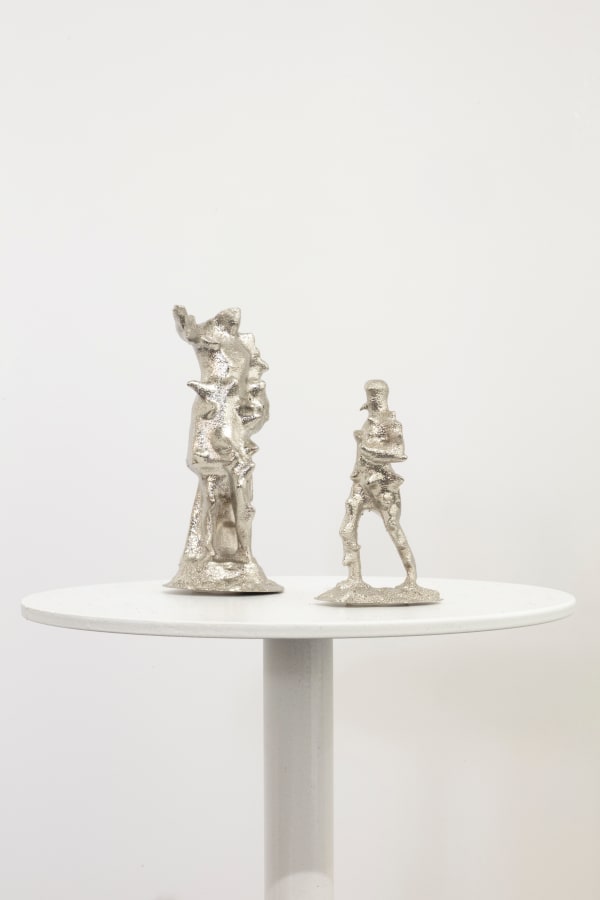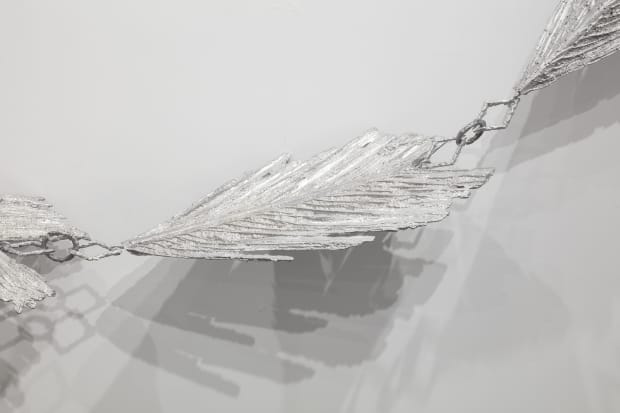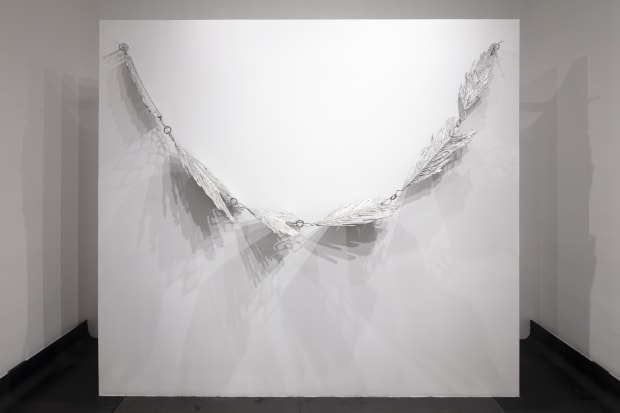For her second exhibition in Campeche, Julieta Gil (b. 1987) revisits central lines of research in her practice: this new body of work investigates traditional symbolic dynamics and their roles in the construction of identity, as well as their effects on public space and collective memory. Gil analyzes the material aspect of historiography and employs a game of scales and abstractions that make visible the malleability of symbols and the flexible nature of time.
As a contemporary flâneuse, Julieta Gil critically navigates the city she inhabits in search of traces of those she names ghost witnesses: presences that inhabit the everyday, which, victims of the back-and-forth of time, end up merging into the immediate environment to the point of passing unnoticed.
-
In her work, Julieta Gil unveils the behind-the-scenes structures –both symbolic and material–that support the founding myth of the nation. The series of reliefs that includes Detrás del águila and Detrás de los rampantes examines from a hidden angle three allegorical figures from the facade of the Palacio de Bellas Artes: the eagle dominating the eastern facade and the Rampants, two angels protecting a man and a woman. The documentation for this series was made out on the building's rooftop, focusing on the backsides of these figures: the artist is interested in what she considers a dissonance between front and back, questioning where we stand and what we are allowed to see.
Gil continues her exploration on the function of ornament in a central piece in the exhibition: Un collar monumental is made from palms cast in aluminum with sand, a technique that echoes the process of fossilization where Gil assumes the role of a taxidermist. Introduced to Mexico City in the 1940s under the mandate by Miguel Alemán, palm trees quickly transformed the urban landscape of modern Mexico as an example of opulence and a flourishing city. However, since 2011 they have been devastated by a pest that threatens the non-endemic species with extinction. By selecting and dissecting a palm leaf and crystallizing it for posterity, the artist pays homage to these plants, whose massive death serves as a reminder of how climate change also eradicates these symbols, turning them into ghosts of contemporary history.
Taking the form of banners and sculptures, Transfigurado and Toy Soldiers expand on her investigation of Los hombres ilustres (2021), a video where Gil proposes a new approach to the monuments of Paseo de la Reforma by distorting them with 3D modeling procedures. Beyond the desire to question or resignify the symbols, the artist submits them to a metamorphosis in order to reinvent them through play and experimentation by which she contrasts scales and materialities in a humorous way. The objects that result from this exercise seem to be shaped in an imprecise stage of their evolution towards the unknown, imagining new stories yet to be told.
In her flâneuse spirit, in the video Memory Palace, Gil seeks to build a personal archive and a space capable of housing memories. The flowers that make up the reliefs and textures of this non-place situated between landscape and cavern were photographed during her walks and later collected into photogrammetric files to model this composition. The condensation of this record refers to how memory –always imperfect– gets altered and abstracted, evoking a malleability of time that escapes our will. Julieta designs a fictitious space that allows the collection and preservation of floral sightings from the physical plane, which could refer to the traditionally feminine gesture of drying flowers, bending the laws of time in search of perpetuating an element that is ephemeral by nature.The work of Julieta Gil is an archive that points toward the future. Her practice preserves and revitalizes historical structures within a contemporary context, while critically reflecting on its true protagonists and witnesses, rethinking our interaction with the environment from a whole new perspective. -

-

-

-
-
Exhibition view: Julieta Gil, ¿Quién mira a quienes miran?, Campeche, Mexico City, 2024
Courtesy of the artist and Campeche, Mexico City
Photography by Ramiro Chaves @chavesdoc -
Exhibition view: Julieta Gil, ¿Quién mira a quienes miran?, Campeche, Mexico City, 2024
Courtesy of the artist and Campeche, Mexico City
Photography by Ramiro Chaves @chavesdoc



